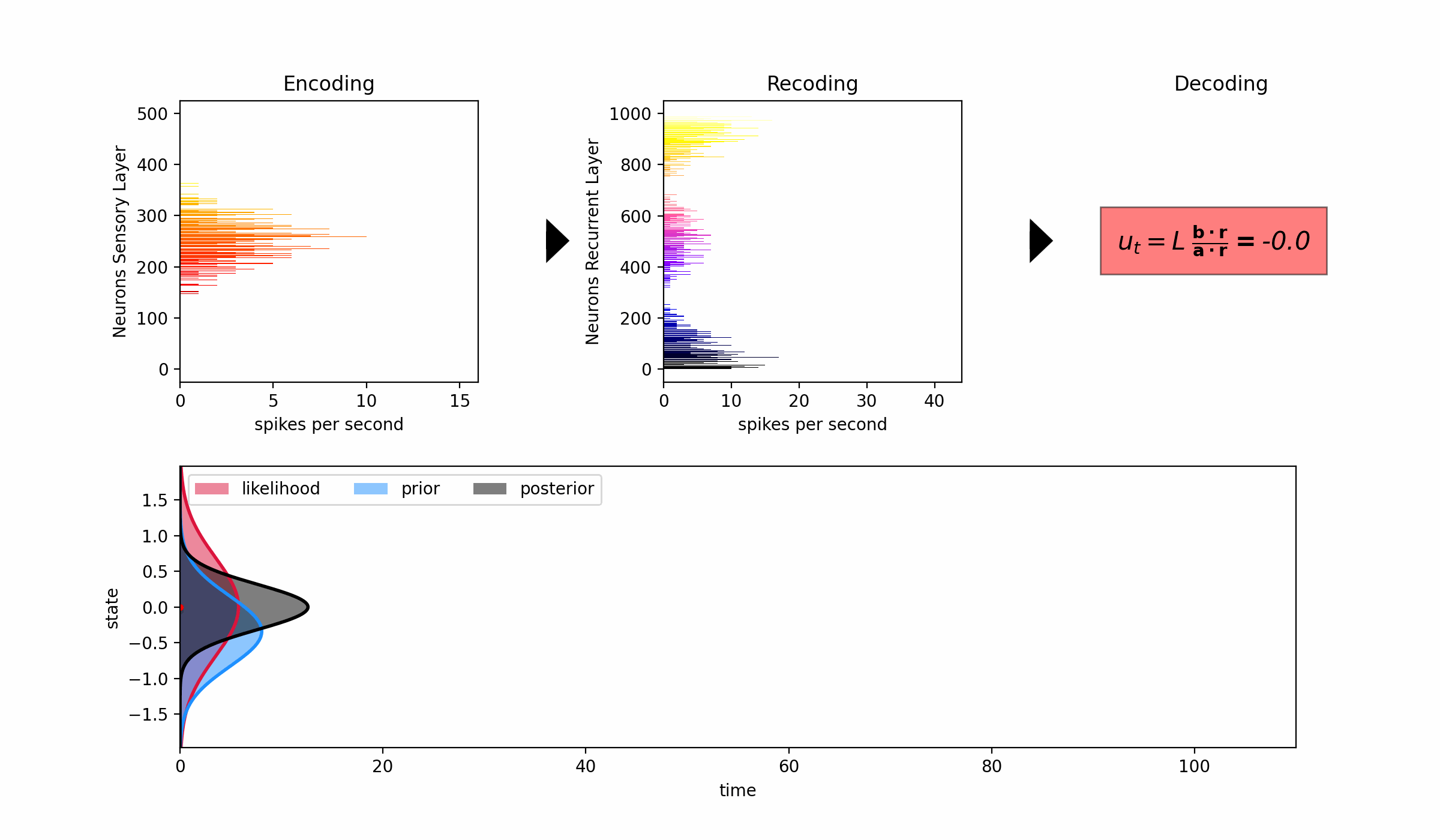
Spike-Constrained Stochastic Control
-
We develop a version of stochastic control that accounts for computational costs in the brain.
-
Combining concepts of efficient coding with control theory, we analyze Linear Quadratic Gaussian (LQG) control. LQG is a well-understood mathematical example of optimal control that combines a Kalman filter to keep track of a hidden state with a linear regulator that minimizes integrated quadratic state and action costs. When the state dynamics are linear, and all noise sources are Gaussian, this combination is your best bet!
-
We assume the brain encodes uncertainty using a Probabilistic Population Code (PPC), which is a distributed neural representation that supports evidence integration through linear operations and marginalization through nonlinear operations
-
We implement the Kalman filter using a spiking neural network:
-
Spike trains emitted by a sensory layer of neurons with Poisson-like response variability encode observations about the Gaussian world state.
-
This neural response feeds a recurrent layer whose firing activity encodes the belief the agent would obtain by implementing recursive Bayesian estimation based on its last observation and action executed.
-
The agent decodes the hidden world state using different projections of the neural activity emitted by the recurrent layer.
-
The agent minimizes the expected total integrated state, action, and neural cost by adjusting its spike rates and control gain.
-
Take away
-
In this simplest version, the precision of the observation and inferences is directly proportional to the number of spikes.
-
We reveal a trade-off: an agent can obtain more utility overall by relinquishing some task performance if doing so saves enough spikes.
-
The optimal spike rate varies with the properties of the system to be controlled (for example, stability and signal-to-noise ratio).
Why it matters?
-
Previous efforts to identify metabolically efficient ways of coding sensory evidence are restricted to feedforward settings. Here, we consider the consequences of closed-loop control.
-
This work provides a foundation for a new type of bounded rational behavior that could be used to explain suboptimal computations in the brain.
-
Understanding the mechanisms that give biological organisms an advantage over machines in perception and mobility can help engineer more robust, general-purpose, and energy-efficient robots.
Code available here